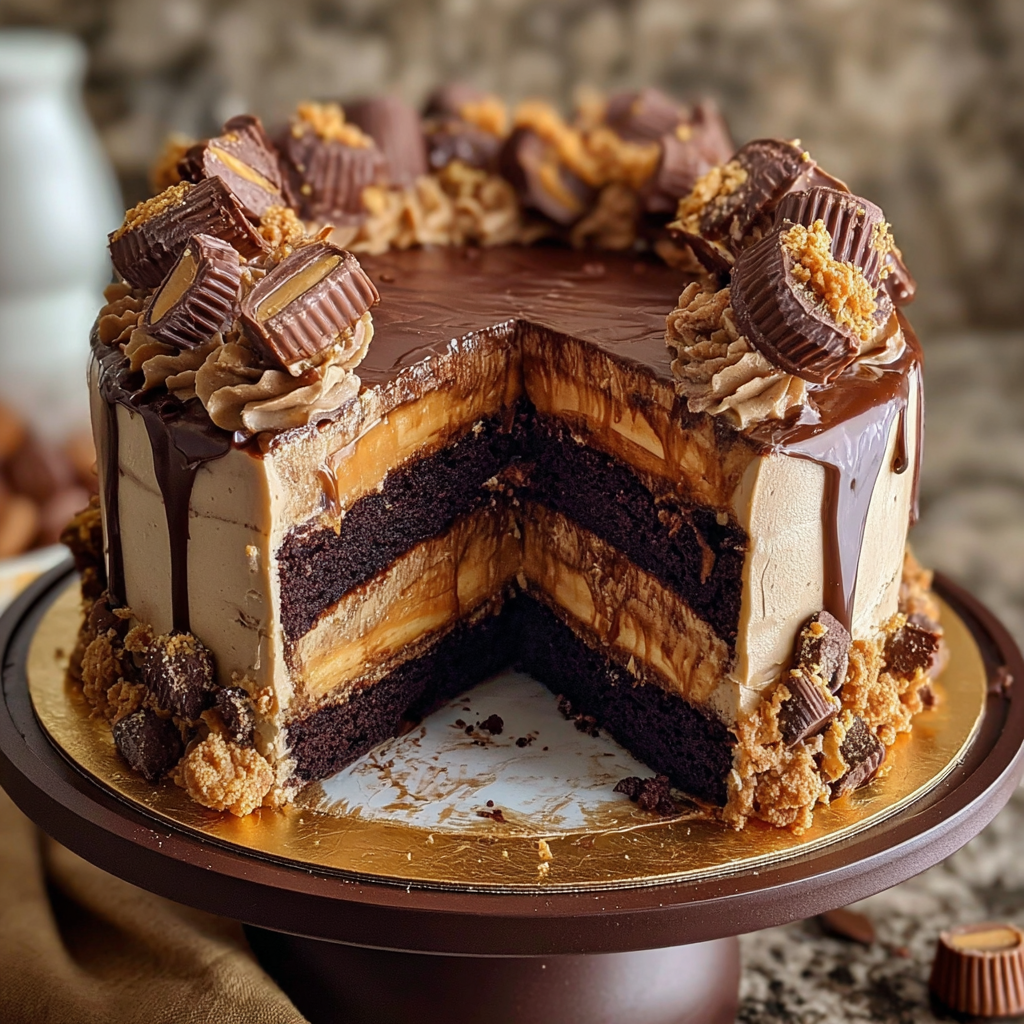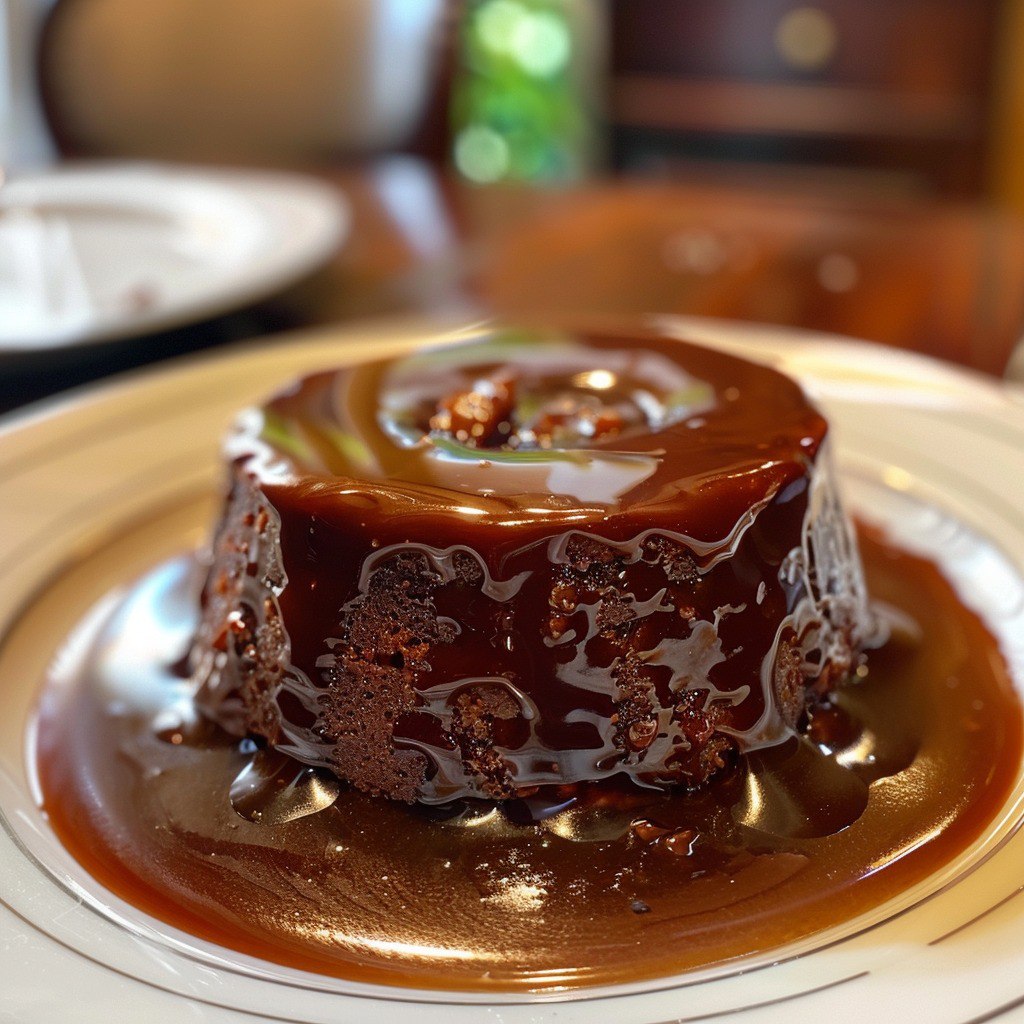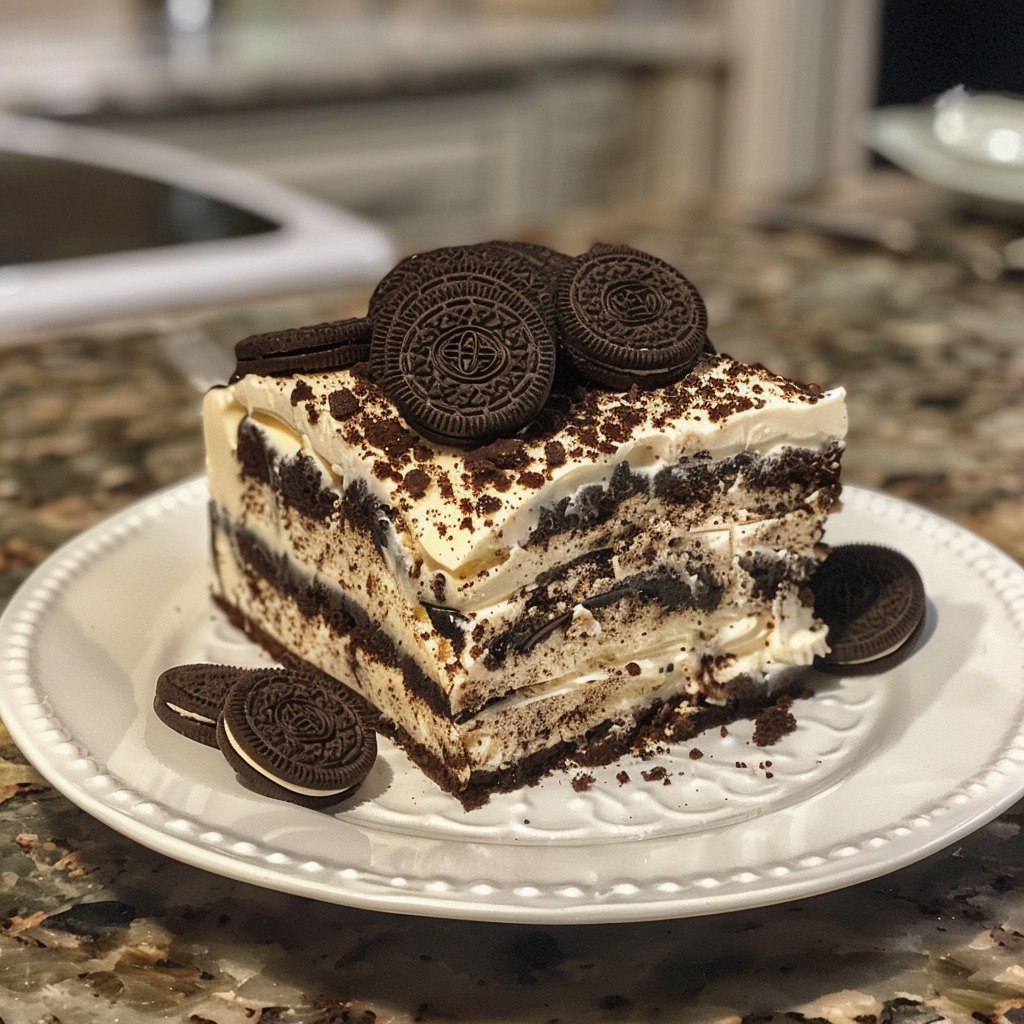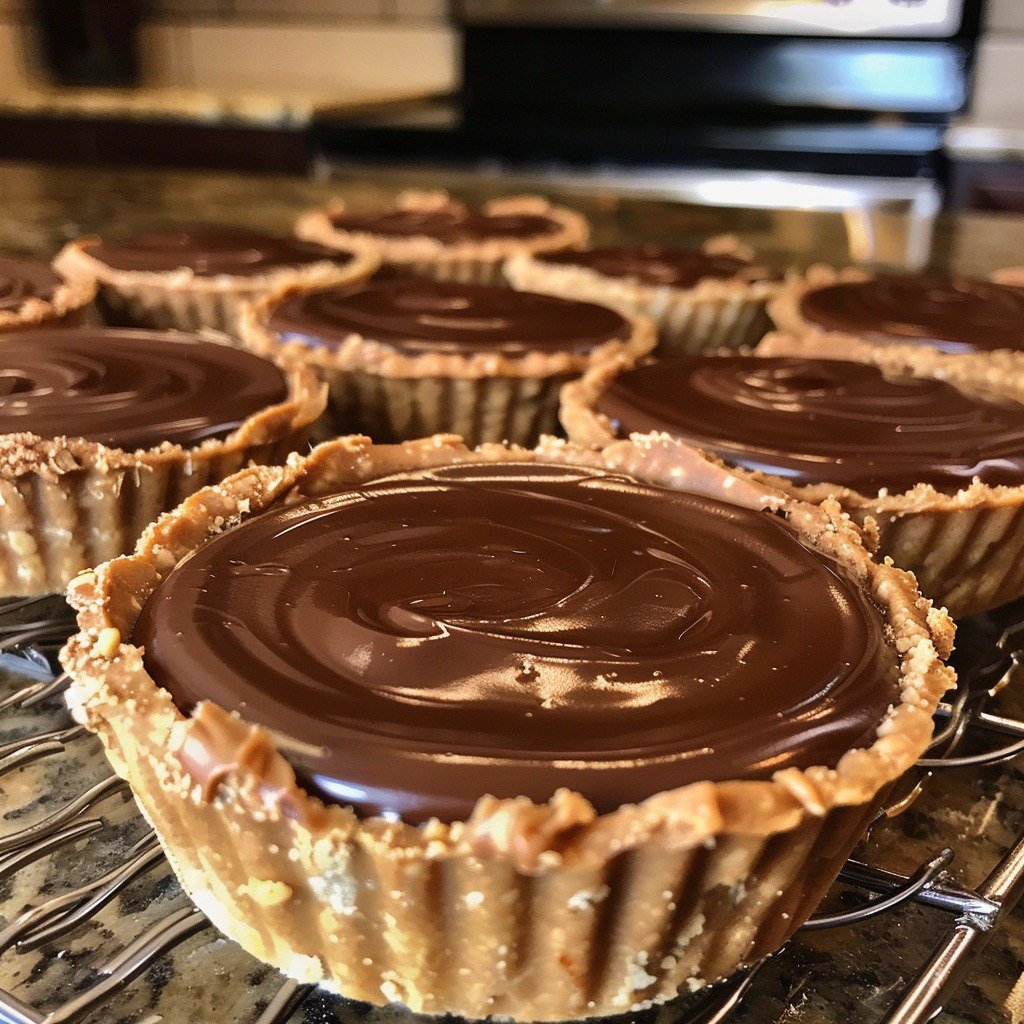Imagine stepping into a charming Parisian café, where the aroma of freshly fried pastries fills the air. French beignets represent the epitome of indulgent French pastry-making, combining simple ingredients into extraordinary treats. Moreover, these golden pillows of dough offer a delightfully crispy exterior that gives way to an airy, tender interior.
Furthermore, authentic French beignets differ significantly from their New Orleans cousins. Additionally, they’re made using choux pastry dough, the same base used for éclairs and cream puffs. This technique creates their signature light, hollow centers that perfectly capture powdered sugar.
Print
French Beignets: The Ultimate Guide to Perfect Parisian Pastries
- Total Time: 35 mins
- Yield: About 24 beignets 1x
- Diet: Vegetarian
Description
French Beignets are light, airy dough pillows fried to perfection and dusted with powdered sugar. Perfect for breakfast or dessert, these classic French treats are a delightful way to enjoy a taste of Paris at home.
Ingredients
- 1 cup water
- 1/2 cup unsalted butter
- 1/4 teaspoon salt
- 1 tablespoon granulated sugar
- 1 cup all-purpose flour
- 4 large eggs
- Vegetable oil, for frying
- Powdered sugar, for dusting
Instructions
- In a medium saucepan, combine water, butter, salt, and granulated sugar. Bring to a boil over medium heat.
- Remove from heat and stir in flour until the mixture forms a smooth ball and pulls away from the sides of the pan.
- Transfer dough to a mixing bowl. Beat in eggs one at a time using a mixer until the dough is smooth and glossy.
- Heat vegetable oil in a deep skillet or fryer to 375°F (190°C).
- Drop spoonfuls of dough into the hot oil, frying a few at a time to avoid overcrowding.
- Fry each beignet for 2–3 minutes per side or until golden and puffed up.
- Remove with a slotted spoon and drain on paper towels.
- Dust warm beignets generously with powdered sugar and serve immediately.
Notes
- For a twist, serve with chocolate sauce, raspberry jam, or a coffee glaze.
- You can refrigerate dough for up to 24 hours before frying.
- Best enjoyed fresh and warm for optimal texture.
- Prep Time: 20 mins
- Cook Time: 15 mins
- Category: Dessert
- Method: Frying
- Cuisine: French
Nutrition
- Serving Size: 1 beignet
- Calories: 120 kcal
- Sugar: 3 g
- Sodium: 50 mg
- Fat: 7 g
- Saturated Fat: 3.5 g
- Unsaturated Fat: 3 g
- Trans Fat: 0 g
- Carbohydrates: 13 g
- Fiber: 0.2 g
- Protein: 2 g
- Cholesterol: 40 mg
Keywords: French beignets, powdered sugar beignets, choux pastry beignets, homemade doughnuts, Paris cafe pastry, fried dessert
Why You’ll Love These Authentic French Beignets
These French beignets aren’t just another fried pastry – they’re a gateway to experiencing genuine French culinary tradition. Here’s why they’ll become your new obsession:
• They’re surprisingly light and airy: Unlike heavy donuts, these beignets puff up beautifully during frying. Additionally, the choux pastry base creates delicate, hollow centers that melt in your mouth.
• They’re impressively versatile: Enjoy them plain with powdered sugar or fill them with pastry cream. Moreover, they pair perfectly with coffee, tea, or hot chocolate for an authentic café experience.
• They’re made with simple pantry ingredients: No special flours or exotic ingredients required. Furthermore, most home bakers already have everything needed in their kitchen.
• They’re perfect for entertaining: Fresh beignets always impress guests with their golden appearance. Additionally, they can be prepared ahead and fried just before serving for maximum impact.
• They’re authentically French: This traditional recipe delivers the same results you’d find in Parisian bakeries. Moreover, mastering this technique opens doors to other choux pastry creations.
• They’re surprisingly quick to make: From start to finish, you’ll have fresh beignets in just 35 minutes. Additionally, the active preparation time is minimal once you understand the process.
Essential Ingredients for Perfect French Beignets
Creating exceptional French beignets begins with understanding each ingredient’s crucial role. Furthermore, quality ingredients make a noticeable difference in the final texture and flavor.
The Liquid Foundation: Water forms the base of your choux pastry dough. Additionally, using filtered water can improve the overall taste. Moreover, the exact temperature during heating affects how well the flour incorporates.
The Fat Component: Unsalted butter provides richness and helps create the tender texture. Furthermore, European-style butter with higher fat content produces superior results. Additionally, butter contributes to the golden color during frying.
The Flavor Enhancers: Salt balances the sweetness and enhances all other flavors significantly. Moreover, granulated sugar adds subtle sweetness and helps with browning. Additionally, these small amounts make a substantial impact on the final taste.
The Structure Builder: All-purpose flour creates the pastry’s structure through gluten development. Furthermore, measuring flour accurately is crucial for proper consistency. Additionally, sifting flour beforehand prevents lumps in your finished dough.
The Binding Agent: Large eggs provide structure, richness, and help create the signature puffing action. Moreover, room temperature eggs incorporate more easily into the warm dough. Additionally, the proteins in eggs contribute to the golden exterior color.
The Frying Medium: Neutral vegetable oil with a high smoke point works best for frying. Furthermore, maintaining proper oil temperature ensures even cooking. Additionally, using enough oil allows beignets to float freely while cooking.
The Finishing Touch: Powdered sugar isn’t just decoration – it’s an essential component. Moreover, dusting while warm helps the sugar adhere properly. Additionally, generous application creates that authentic café appearance.
Step-by-Step Guide to Making French Beignets
Mastering French beignets requires understanding the choux pastry technique and proper frying methods. However, following these detailed steps ensures consistent success every time.
Step 1: Preparing the Choux Pastry Base
Begin by combining water, butter, salt, and granulated sugar in a heavy-bottomed saucepan. Additionally, use medium heat to prevent scorching the mixture. Moreover, stir occasionally until the butter melts completely and the mixture reaches a rolling boil.
Watch carefully as the mixture heats – it should bubble vigorously across the entire surface. Furthermore, this vigorous boiling is essential for proper flour incorporation. Additionally, don’t let the mixture boil for too long, as excessive evaporation affects the dough consistency.
Remove the saucepan from heat immediately once boiling is achieved. Moreover, timing is crucial at this stage to prevent overcooking. Additionally, have your flour measured and ready to add quickly.
Step 2: Creating the Dough Foundation
Add all the flour at once to the hot liquid mixture. Furthermore, stir vigorously with a wooden spoon until the mixture forms a cohesive ball. Moreover, continue stirring until the dough pulls cleanly away from the pan’s sides.
The mixture will look lumpy initially, but persistent stirring creates smooth dough. Additionally, this process typically takes 2-3 minutes of continuous mixing. Moreover, the dough should appear slightly glossy when properly developed.
Return the pan to low heat briefly, stirring constantly for about 30 seconds. Furthermore, this step removes excess moisture and creates better texture. Additionally, you’ll notice a thin film forming on the pan’s bottom when ready.
Step 3: Incorporating the Eggs
Transfer the hot dough to a clean mixing bowl to cool slightly. Moreover, letting it cool for 2-3 minutes prevents the eggs from scrambling. Additionally, this brief cooling period makes mixing much easier.
Using a hand mixer or stand mixer, beat the dough on medium speed briefly. Furthermore, this breaks up any remaining lumps and creates smoother texture. Additionally, scrape down the bowl sides to ensure even mixing.
Add eggs one at a time, beating well after each addition. Moreover, the dough will look broken initially but comes together with continued beating. Additionally, each egg should be fully incorporated before adding the next.
Continue beating until the dough becomes smooth and glossy. Furthermore, properly mixed dough should fall from the beaters in thick ribbons. Additionally, the finished consistency should be pipeable but hold its shape.
Step 4: Preparing for Frying
Heat vegetable oil to exactly 375°F (190°C) in a deep skillet or fryer. Moreover, use a candy thermometer for accurate temperature monitoring. Additionally, maintaining consistent temperature is crucial for even cooking.
Fill your fryer or skillet with at least 3 inches of oil for proper floating. Furthermore, deeper oil prevents beignets from touching the bottom and burning. Additionally, avoid overcrowding by frying in small batches.
Prepare a paper towel-lined plate for draining finished beignets. Moreover, have powdered sugar ready for immediate dusting. Additionally, set up tongs or a slotted spoon for safe removal from hot oil.
Step 5: Frying the Beignets
Drop spoonfuls of dough carefully into the hot oil using two spoons. Additionally, work quickly but safely to avoid oil splattering. Moreover, space them adequately to prevent sticking together during cooking.
Fry beignets for 2-3 minutes per side until golden brown and beautifully puffed. Furthermore, they should float to the surface almost immediately. Additionally, adjust heat if oil temperature fluctuates significantly.
Turn beignets gently using tongs or a slotted spoon for even browning. Moreover, properly cooked beignets will be uniformly golden and sound hollow when tapped. Additionally, they should roughly double in size during frying.
Remove finished beignets immediately and drain briefly on paper towels. Furthermore, don’t let them sit too long before dusting with sugar. Additionally, serve while still warm for the best texture and flavor.
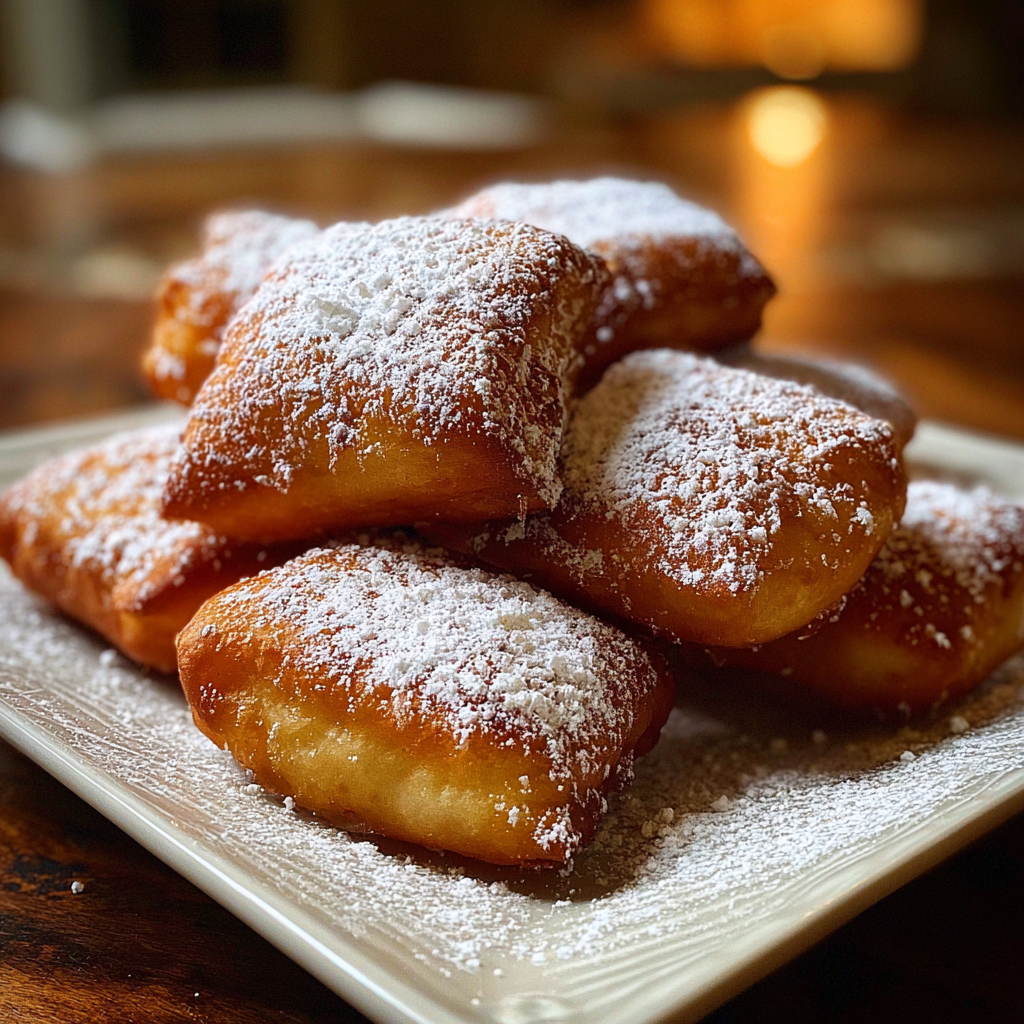
Pro Tips for Perfect French Beignets Every Time
Creating restaurant-quality French beignets involves mastering several professional techniques. Furthermore, these insider secrets ensure consistent results and help troubleshoot common issues.
Temperature Control Mastery: Oil temperature directly affects texture and cooking time. Additionally, too cool oil creates greasy, heavy beignets. Moreover, excessively hot oil burns the exterior before the interior cooks properly.
Dough Consistency Secrets: Properly mixed choux pastry should be smooth and glossy. Furthermore, it should hold its shape when piped but still flow easily. Additionally, overmixed dough becomes tough, while undermixed dough won’t puff properly.
Timing Techniques: Serve beignets immediately after dusting with powdered sugar. Moreover, they lose their crispy exterior and become soggy quickly. Additionally, warm beignets absorb sugar better than cooled ones.
Size Considerations: Keep beignets uniform in size for even cooking throughout each batch. Furthermore, larger pieces take longer to cook through completely. Additionally, smaller beignets cook faster but may become too crispy.
Oil Management: Filter and reuse frying oil up to three times for economy. Moreover, properly maintained oil produces better-tasting results. Additionally, strain out any burnt bits between batches to prevent off-flavors.
Storage Solutions: Fresh beignets don’t store well but can be briefly rewarmed. Furthermore, freeze unfired dough portions for quick future batches. Additionally, defrost frozen dough completely before frying for best results.
Common Mistakes to Avoid When Making French Beignets
Even experienced bakers sometimes struggle with French beignets due to technique-sensitive preparation. However, understanding these pitfalls helps ensure success every time.
Inadequate Boiling: Insufficient boiling prevents proper flour gelatinization and affects rising. Moreover, the mixture must bubble vigorously across the entire surface. Additionally, weak boiling creates dense, heavy beignets that won’t puff properly.
Incorrect Oil Temperature: Cool oil produces greasy results, while hot oil burns exteriors. Furthermore, temperature fluctuations create uneven cooking and texture. Additionally, invest in a quality thermometer for consistent monitoring.
Overmixing the Dough: Excessive beating after adding eggs creates tough, chewy beignets. Moreover, mix just until smooth and glossy for optimal texture. Additionally, overmixed dough often fails to puff during frying.
Improper Egg Addition: Adding eggs too quickly or to hot dough scrambles them. Furthermore, room temperature eggs incorporate more easily. Additionally, each egg must be fully blended before adding the next.
Overcrowding the Fryer: Too many beignets lower oil temperature and cause sticking. Moreover, adequate space allows proper circulation and even cooking. Additionally, fry in small batches for consistent results.
Delayed Serving: Beignets must be served immediately for optimal texture. Furthermore, they become soggy and lose their appeal quickly. Additionally, dust with sugar while still warm for best adhesion.
Creative Variations for Your French Beignets
Once you’ve mastered traditional French beignets, exploring variations keeps this classic pastry exciting. Furthermore, these adaptations showcase the versatility of choux pastry technique.
Filled Beignet Variations: Create openings in cooled beignets and fill with pastry cream. Additionally, vanilla, chocolate, or fruit-flavored creams work beautifully. Moreover, use a pastry bag to inject fillings for professional presentation.
Flavored Dough Options: Add orange or lemon zest to the dough for citrus-scented beignets. Furthermore, vanilla extract or almond extract creates subtle flavor variations. Additionally, a pinch of cinnamon adds warmth and complexity.
Sweet Coating Alternatives: Try cinnamon sugar instead of plain powdered sugar for spice lovers. Moreover, drizzle with chocolate glaze or caramel sauce for extra indulgence. Additionally, roll warm beignets in granulated sugar for different texture.
Savory Beignet Adaptations: Omit sugar from the dough and fill with cheese or herbs. Furthermore, these make excellent appetizers or brunch items. Additionally, serve with dipping sauces for interactive dining experiences.
Seasonal Specialties: Incorporate pumpkin spice during fall months for seasonal appeal. Moreover, add cocoa powder to the dough for chocolate versions. Additionally, match flavors to holidays and special occasions.
International Inspirations: Create fusion versions with matcha powder for Japanese-inspired treats. Furthermore, cardamom adds Middle Eastern flair to traditional recipes. Additionally, experiment with local flavor preferences and ingredients.
Serving Suggestions and Pairing Ideas for French Beignets
French beignets shine brightest when paired thoughtfully with complementary beverages and accompaniments. Moreover, proper presentation enhances their already impressive appeal.
Classic Beverage Pairings: Serve with strong French coffee for authentic café experience. Additionally, hot chocolate creates an indulgent combination perfect for cold mornings. Moreover, espresso’s intensity balances the beignets’ sweetness beautifully.
Tea Service Options: Earl Grey tea complements the buttery richness elegantly. Furthermore, chamomile tea offers a soothing contrast to rich pastry. Additionally, green tea provides a light, refreshing balance to heavy fried foods.
Presentation Techniques: Arrange beignets on tiered serving stands for dramatic effect. Moreover, dust with powdered sugar just before serving for pristine appearance. Additionally, provide small plates and napkins for comfortable eating.
Accompaniment Ideas: Fresh berry compotes add color and tartness to rich beignets. Furthermore, vanilla ice cream creates an excellent temperature contrast. Additionally, flavored whipped creams elevate simple beignets to dessert status.
Timing Considerations: Serve immediately after frying for optimal texture and temperature. Moreover, prepare accompaniments in advance to minimize serving delays. Additionally, keep guests informed about timing for best experience.
Portion Planning: Plan for 2-3 beignets per person as dessert portions. Furthermore, lighter appetites may prefer just 1-2 pieces. Additionally, provide variety with different coatings or fillings for larger groups.
Storage and Make-Ahead Tips for French Beignets
While French beignets taste best fresh, understanding proper storage extends their enjoyment. Additionally, strategic preparation can streamline entertaining and reduce last-minute stress.
Immediate Storage: Fresh beignets maintain quality for only 2-3 hours at room temperature. Moreover, store in loosely covered containers to preserve some crispiness. Additionally, avoid airtight storage which creates sogginess quickly.
Dough Preparation Ahead: Prepare choux pastry dough up to 24 hours in advance. Furthermore, cover tightly and refrigerate until ready to fry. Additionally, bring to room temperature before shaping and frying.
Freezing Strategies: Freeze portioned uncooked dough on baking sheets before transferring to bags. Moreover, frozen portions keep for up to 3 months with good quality. Additionally, fry directly from frozen, adding 1-2 minutes cooking time.
Reheating Techniques: Warm leftover beignets in a 350°F oven for 3-4 minutes. Furthermore, avoid microwaving which creates tough, chewy textures. Additionally, re-dust with powdered sugar after reheating.
Quality Indicators: Fresh beignets should be golden, crispy outside, and tender inside. Moreover, staleness appears as tough exteriors and dense interiors. Additionally, off-odors indicate spoilage and unsafe consumption.
Planning Strategies: Prepare all ingredients and equipment in advance for smooth execution. Furthermore, have oil heating while preparing dough for efficient timing. Additionally, enlist helpers for dusting and serving during frying.
Nutritional Information and Dietary Considerations
Understanding the nutritional profile of French beignets helps with meal planning and dietary awareness. Furthermore, several modifications can accommodate various dietary restrictions and preferences.
Caloric Content: Each beignet contains approximately 85-100 calories depending on size and oil absorption. Additionally, the primary calories come from flour, eggs, and absorbed frying oil. Moreover, larger beignets obviously contain proportionally more calories.
Macronutrient Breakdown: Beignets provide primarily carbohydrates from flour and fats from butter and oil. Furthermore, eggs contribute protein and additional fats. Additionally, they’re relatively low in fiber and micronutrients.
Dietary Modifications: Gluten-free flour blends can substitute regular flour with texture changes. Moreover, results will differ from traditional versions significantly. Additionally, xanthan gum may be necessary for proper binding.
Reducing Fat Content: Baking instead of frying dramatically reduces fat and calories. However, texture and taste will differ substantially from traditional fried versions. Additionally, spray with oil and bake at 425°F for 15-20 minutes.
Allergen Considerations: Traditional beignets contain gluten, eggs, and dairy from butter. Furthermore, cross-contamination from frying oil may affect those with severe allergies. Additionally, check all ingredients for hidden allergens.
Portion Control: These rich pastries are best enjoyed in moderation. Moreover, their small size makes portion control challenging. Additionally, pair with fresh fruit to add nutrients and fiber.
Troubleshooting Your French Beignets
Even experienced bakers occasionally encounter issues with French beignets. However, understanding common problems and solutions helps achieve consistent success.
Beignets Won’t Puff: This usually indicates inadequate boiling during dough preparation. Additionally, old eggs or incorrect temperatures can prevent proper rising. Moreover, ensure vigorous boiling and proper mixing techniques.
Dense, Heavy Texture: Overmixed dough or incorrect flour ratios create density issues. Furthermore, insufficient oil temperature produces greasy, heavy results. Additionally, measure ingredients accurately and monitor oil temperature carefully.
Uneven Browning: Inconsistent oil temperature or overcrowding causes uneven cooking. Moreover, turning too frequently can prevent proper browning. Additionally, maintain steady temperature and adequate spacing between pieces.
Greasy Results: Cool oil or inadequate draining creates excessive oil absorption. Furthermore, paper towels should absorb surface oil immediately after frying. Additionally, ensure oil reaches proper temperature before adding dough.
Collapsed Beignets: Rapid temperature changes or undercooking can cause collapse. Moreover, removing from oil too quickly prevents structure setting. Additionally, ensure complete cooking before removing from oil.
Tough Texture: Overmixing after adding eggs typically causes toughness. Furthermore, excessive flour can create heavy, tough beignets. Additionally, mix just until smooth for optimal tenderness.
Advanced Techniques for Master-Level French Beignets
Elevating your French beignets from good to exceptional requires mastering advanced pastry techniques. Moreover, these professional methods separate amateur from expert results.
Piping Techniques: Use pastry bags fitted with large round tips for uniform shaping. Additionally, piping creates more consistent sizes than spooning. Furthermore, practice steady pressure and smooth movements for professional appearance.
Oil Management Mastery: Filter oil between batches to remove burnt particles and maintain quality. Moreover, proper oil maintenance extends usability and improves flavor. Additionally, monitor oil color and odor for quality indicators.
Temperature Precision: Use infrared thermometers for instant, accurate temperature readings. Furthermore, digital probe thermometers provide continuous monitoring. Additionally, slight temperature adjustments dramatically affect final results.
Timing Coordination: Develop systems for efficient batch cooking and immediate serving. Moreover, coordinate dough preparation with oil heating for smooth workflow. Additionally, prepare serving areas before beginning frying process.
Quality Assessment: Learn to identify perfectly cooked beignets by sight, sound, and feel. Furthermore, properly cooked beignets sound hollow when tapped gently. Additionally, golden color should be uniform across all surfaces.
Professional Finishing: Master even powdered sugar application for consistent appearance. Moreover, use fine-mesh sieves for uniform distribution. Additionally, develop plating techniques for attractive presentation.
FAQs About French Beignets
Q: How do I know when French beignets are properly cooked? A: Properly cooked beignets will be golden brown, doubled in size, and sound hollow when tapped. Additionally, they should float immediately and maintain their puffed shape. Moreover, the interior should be tender and slightly hollow when broken open.
Q: Can I make the dough for French beignets ahead of time? A: Yes, choux pastry dough can be prepared up to 24 hours in advance. Furthermore, store it covered in the refrigerator and bring to room temperature before frying. Additionally, the texture may be slightly different but still produces excellent results.
Q: Why didn’t my French beignets puff up during frying? A: Insufficient boiling during dough preparation is the most common cause. Moreover, old eggs or incorrect oil temperature can prevent proper puffing. Additionally, ensure vigorous boiling and maintain oil temperature at exactly 375°F.
Q: What’s the best oil for frying French beignets? A: Neutral vegetable oils with high smoke points work best, such as canola or peanut oil. Furthermore, avoid olive oil or butter which burn at frying temperatures. Additionally, maintain at least 3 inches of oil depth for proper floating.
Q: How do I prevent my French beignets from becoming greasy? A: Maintain proper oil temperature and drain immediately on paper towels. Moreover, cool oil absorbs into the pastry creating greasy results. Additionally, don’t overcrowd the fryer which lowers oil temperature.
Q: Can I bake French beignets instead of frying them? A: While possible, baked versions won’t have the same texture or flavor as traditional fried beignets. However, bake at 425°F for 15-20 minutes if preferred. Additionally, brush with melted butter before baking for better color.
Q: What causes French beignets to collapse after frying? A: Undercooking or rapid temperature changes typically cause collapse. Moreover, ensure complete cooking before removing from oil. Additionally, avoid placing hot beignets in cold environments immediately after frying.
Q: How long do French beignets stay fresh? A: Beignets are best consumed immediately while warm and crispy. However, they maintain acceptable quality for 2-3 hours at room temperature. Additionally, reheating in a 350°F oven briefly can restore some crispiness.
Q: Can I add flavors to the French beignet dough? A: Absolutely! Add citrus zest, vanilla extract, or spices to the dough after cooking the flour mixture. Furthermore, ensure additions don’t affect the dough’s consistency significantly. Additionally, complementary flavors enhance rather than overpower the delicate pastry.
Q: What’s the difference between French beignets and New Orleans beignets? A: French beignets use choux pastry creating light, hollow centers, while New Orleans versions use yeasted dough. Moreover, French beignets are typically round and puffed, whereas New Orleans beignets are square and flatter. Additionally, preparation methods differ significantly between the two styles.
Q: How do I achieve perfectly round French beignets? A: Use two spoons of equal size to drop uniform portions into oil. Furthermore, piping bags with large round tips create more consistent shapes. Additionally, practice helps develop muscle memory for consistent sizing.
Q: Why is my choux pastry dough too thick or too thin? A: Flour measurement accuracy and cooking time affect consistency significantly. Moreover, humidity levels can impact flour absorption rates. Additionally, adjust with small amounts of flour or water as needed for proper consistency.
Conclusion
French beignets represent the perfect intersection of technique and tradition, offering home bakers an authentic taste of Parisian pastry craftsmanship. Moreover, mastering this classic recipe opens doors to countless variations and related pastry techniques. Additionally, the satisfaction of creating these golden, puffy delights from simple ingredients never gets old.
Furthermore, these versatile pastries adapt beautifully to different occasions and flavor preferences. Whether served as an elegant brunch centerpiece or enjoyed as an afternoon treat with coffee, they consistently impress and delight. Additionally, their relatively quick preparation time makes them accessible for both planned entertaining and spontaneous indulgence.

